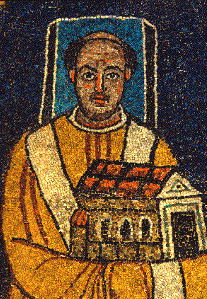
Louis the Pious, also called the Fair and the Debonaire, was King of the Franks and co-emperor with his father, Charlemagne, from 813. He was also King of Aquitaine from 781. As the only surviving son of Charlemagne and Hildegard, he became the sole ruler of the Franks after his father's death in 814, a position that he held until his death except from November 833 to March 834, when he was deposed.
The 810s decade ran from January 1, 810, to December 31, 819.
The 820s decade ran from January 1, 820, to December 31, 829.
The 830s decade ran from January 1, 830, to December 31, 839.
The 840s decade ran from January 1, 840, to December 31, 849.
The 850s decade ran from January 1, 850, to December 31, 859.
The 870s decade ran from January 1, 870, to December 31, 879.
The 790s decade ran from January 1, 790, to December 31, 799.
The 610s decade ran from January 1, 610, to December 31, 619.

Year 840 (DCCCXL) was a leap year starting on Thursday in the Julian calendar, the 840th year of the Common Era (CE) and Anno Domini (AD) designations, the 840th year of the 1st millennium, the 40th year of the 9th century, and the 1st year of the 840s decade.
The 930s decade ran from January 1, 930, to December 31, 939.
The 970s decade ran from January 1, 970, to December 31, 979.
The 980s decade ran from January 1, 980, to December 31, 989.
The 990s decade ran from January 1, 990, to December 31, 999.
Year 877 (DCCCLXXVII) was a common year starting on Tuesday of the Julian calendar.

Pope Paschal I was the bishop of Rome and ruler of the Papal States from 25 January 817 to his death in 824.
Pope Nicholas I, called Nicholas the Great, was the bishop of Rome and ruler of the Papal States from 24 April 858 until his death. He is the last of the three Popes listed in the Annuario Pontificio with the title "the Great", alongside Popes Leo I and Gregory I.

Hincmar, archbishop of Reims, was a Frankish jurist and theologian, as well as the friend, advisor and propagandist of Charles the Bald. He belonged to a noble family of northern Francia.

The Battle of Pancorbo took place in 816 between a Moorish army from the Emirate of Cordoba sent by Al-Hakam I and under the control of Abd al-Karim ibn Abd al-Wahid ibn Mugit and pro-Frankish forces under the control of Balask al-Yalasqi. The battle was fought when the Córdoban forces attempted to cross the pass at Pancorbo.
During the Battle of Roncevaux Pass a combined Basque-Qasawi Muslim army defeated a Carolingian military expedition in 824. The battle took place only 46 years after the first Battle of Roncevaux Pass (778) in a confrontation showing similar features: a Basque force engaging from the mountains, a northbound expedition led by the Franks, and the same geographical setting.





